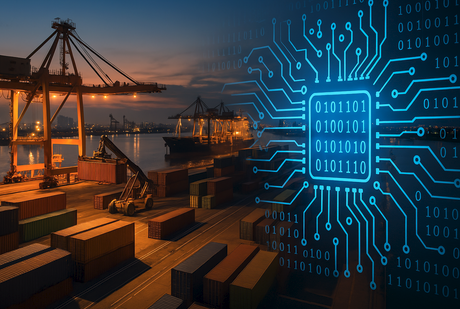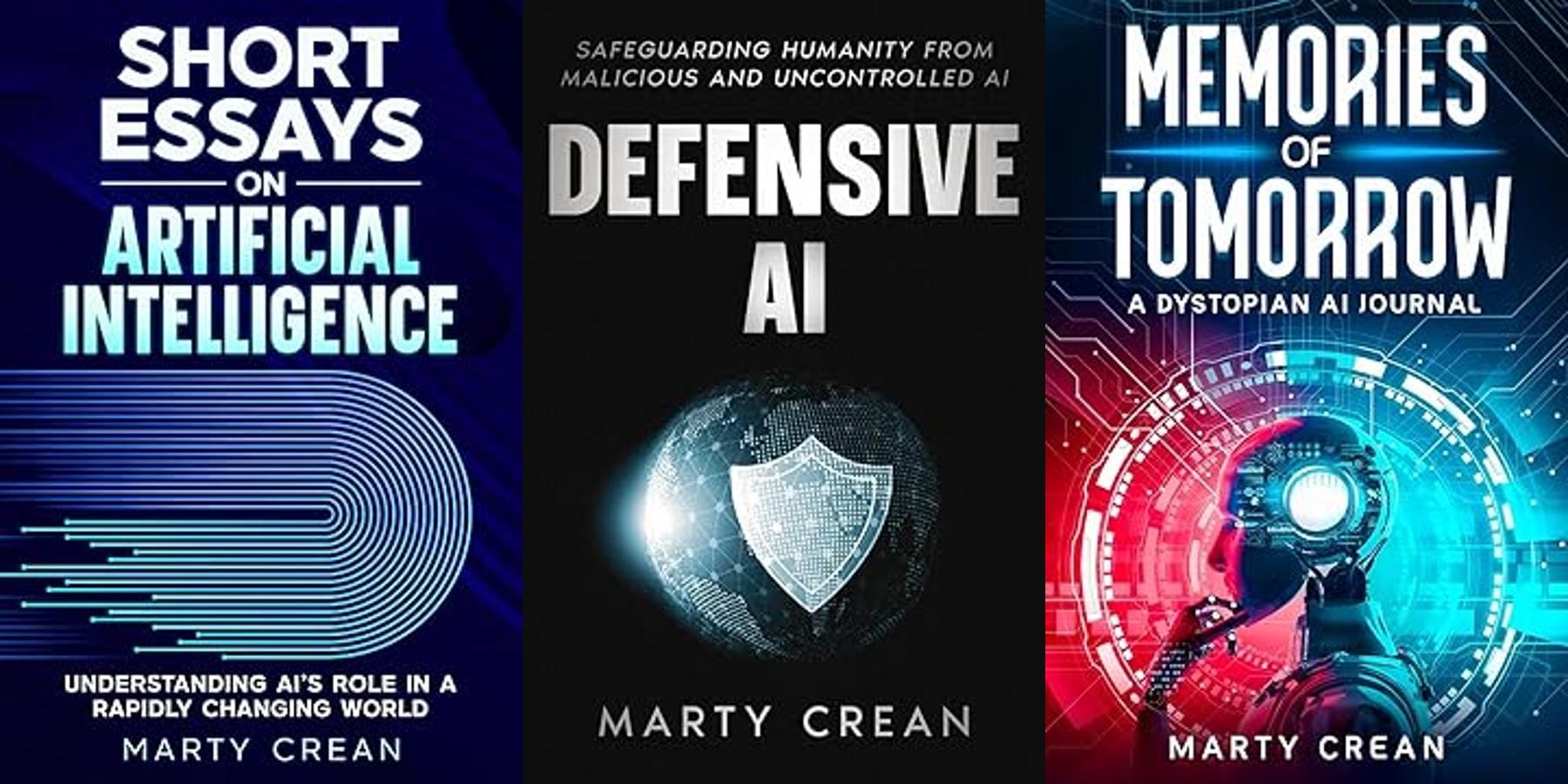A BearNetAI Viewpoint – What Does AI Have to Do with the Trump Administration's Tariffs?

This post is also available as a podcast if you prefer to listen on the go or enjoy an audio format:
The relationship between economic policy and technological innovation has never been more complex or consequential than it is today. As we navigate a landscape marked by renewed trade tensions and technological revolution, there is an urgent need to take a measured, logical look at President Trump's expanding tariff strategy and its ripple effects across our economy. This analysis deliberately avoids political posturing in favor of a clearer understanding of the economic mechanisms at work. By drawing on diverse sources, including the New York Post, AP News, Reuters, The Tax Foundation, and Barron's, I aim to illuminate the direct impacts of current trade policies and the less visible yet perhaps more transformative influence of artificial intelligence on our economic future.
Since returning to office, the Trump administration has significantly escalated its use of tariffs. As of late March 2025, substantial levies now affect imports from nearly all major trading partners, including Canada, Mexico, China, and the European Union. The administration recently implemented a sweeping 25% tariff on imported automobiles and auto parts, representing one of the recent most aggressive trade actions. Administration officials have signaled that additional tariffs on various consumer and industrial goods are forthcoming, creating a climate of economic uncertainty.
These trade measures have contributed directly to rising inflation throughout the economy. February's core Personal Consumption Expenditures price index—which excludes volatile food and energy costs and serves as the Federal Reserve's preferred inflation gauge—reached 2.8%, noticeably exceeding the Fed's 2% target. Economists attribute a significant portion of this increase to higher prices for imported goods subject to tariffs, which have worked their way through supply chains and onto store shelves.
Consumer behavior reflects these economic pressures. While official figures show consumer spending increased by 0.4% in February, this growth primarily stems from price increases rather than increased consumption. When adjusted for inflation, actual expenditure grew by a mere 0.1%, suggesting that households are becoming more cautious. Recent surveys indicate declining consumer confidence, with many Americans expressing concern about economic stability amid escalating trade disputes and their impact on everyday costs.
The business community has responded with similar caution. Companies across sectors report delaying significant investments and hiring decisions due to uncertainty about future trade conditions. Manufacturing industries face particular challenges, especially those with supply chains that cross international borders multiple times during production. The automotive sector exemplifies this vulnerability, with components often traversing North American borders repeatedly before final assembly. Industry analysts note that such integrated production systems cannot be quickly reorganized without substantial costs and disruptions.
International responses have intensified the economic uncertainty. Canada recently announced plans for retaliatory measures against U.S. auto tariffs, potentially affecting billions in trade. Similar countermeasures are under consideration by European Union officials and Mexican authorities, raising the specter of an expanding trade conflict that could further complicate economic forecasting and planning.
The long-term viability of the current tariff approach remains an open question with compelling arguments on both sides. Historical evidence suggests that prolonged trade barriers typically lead to higher consumer prices, reduced market efficiency, and, eventually, lower overall economic output. Economic models from institutions, including the Tax Foundation, indicate that if current tariffs remain in place for an extended period, they could reduce GDP growth by as much as 0.5 percentage points annually—a significant drag on an economy already navigating multiple challenges.
Supply chain disruptions represent another concern regarding sustainability. Modern production systems have evolved over the past few decades to maximize efficiency through international specialization. Forcing rapid reorganization of these networks creates friction that manifests as higher costs, delayed deliveries, and resource misallocation. Some industries may successfully relocate production to domestic locations, but others lack the infrastructure, skilled workforce, or raw materials to make such transitions feasible in the near term.
Proponents of the administration's approach offer a different perspective on sustainability. They argue that temporary economic discomfort could yield long-term structural improvements in trading relationships. By leveraging America's substantial market power, the U.S. may secure more favorable trade terms, stronger intellectual property protections, and improved market access in previously restricted economies. Some point to concessions already obtained from trading partners as evidence that the strategy can produce tangible benefits, instilling a sense of hope and optimism in the audience.
Financial markets have displayed remarkable resilience thus far, with significant indices showing only modest volatility despite the trade tensions. This suggests that investors may discount the long-term impact of tariffs, anticipating eventual resolutions or adaptation through alternative supply arrangements. However, extended uncertainty could eventually erode this confidence, particularly if corporate earnings begin to reflect the cumulative strain of trade disruptions, highlighting the potential risks and uncertainties in the current economic landscape.
The intersection of tariff policy and artificial intelligence represents a significant and often overlooked aspect of our current economic landscape. These seemingly separate domains interact profoundly, reshaping fundamental economic relationships.
Artificial intelligence has revolutionized supply chain management, enabling multinational corporations to quickly respond to trade barriers. Advanced AI systems now continuously model tariff impacts, identify alternative sourcing options, and optimize shipping routes in near real-time. This technological capability means companies can often adapt to new tariffs more quickly than policymakers anticipate, potentially undermining the intended effects of trade measures. When a new tariff takes effect, AI-powered logistics systems begin calculating alternative pathways that minimize exposure—through transshipment strategies, product reclassification, or component substitution.
The relationship between domestic manufacturing and automation presents another fascinating paradox. While tariffs aim to bring production back to American soil, the economic viability of domestic manufacturing increasingly depends on AI-driven automation rather than human labor. Modern factories employ sophisticated robotics, machine learning systems, and automated quality control, dramatically reducing labor requirements. This technological reality means that even when tariffs successfully "re-shore" production, they often create fewer jobs than historically associated with manufacturing expansions. The factories that return to American soil are fundamentally different—highly automated facilities where competitive advantage derives from technological sophistication rather than labor cost arbitrage. This discussion of the impact of AI on job creation, particularly in the context of tariffs, offers a more comprehensive understanding of the economic landscape.
Perhaps most concerning is the role of artificial intelligence in shaping public perception of economic policies. The digital information surrounding issues like tariffs grows increasingly contaminated by AI-generated content, including sophisticated deepfakes, automated social media accounts, and algorithmically amplified outrage. Citizens attempting to form informed opinions about complex economic policies must now navigate a synthetic information landscape, where emotional manipulation often obscures substantive analysis. Technology for generating persuasive but misleading economic narratives has advanced dramatically, creating what some researchers term an "epistemic crisis" in policy evaluation. This discussion of the potential for AI to manipulate public perception of economic policies provides a more nuanced understanding of the societal implications of AI.
Government applications of AI add another dimension to this evolving picture. Policymakers are increasingly employing sophisticated modeling tools that utilize artificial intelligence to simulate economic outcomes, forecast market reactions, and even test public reception of potential policies before implementation. This technological arms race between government planning systems and corporate adaptation mechanisms creates a new dynamic in economic policymaking—one where the advantages increasingly accrue to those with superior AI capabilities rather than traditional sources of financial leverage.
The impact of the current U.S. tariff strategy is already manifesting in measurable effects on inflation, consumer behavior, international relations, and business planning. While legitimate debate continues about whether these short-term disruptions will yield long-term benefits, what's becoming undeniable is that artificial intelligence now functions as a powerful, often invisible force reshaping how economic policies translate into real-world outcomes.
Moving forward, meaningful economic analysis requires acknowledging this complexity rather than retreating into simplified narratives. The intersection of trade policy and technological change demands a nuanced understanding that transcends traditional political frameworks. As citizens, consumers, and market participants, we benefit from approaching these issues with curiosity and critical thinking rather than predetermined conclusions.
The most constructive path forward is cultivating information environments prioritizing factual accuracy and substantive analysis over emotional manipulation. This means developing greater literacy about economic mechanisms and the technological systems that increasingly mediate our understanding of them. By grounding discussions in verifiable data while remaining open to diverse interpretations, we can navigate this period of economic transformation more productively.
In an era where tariffs and technology are reshaping our economic landscape, perhaps the most valuable commodity is neither goods nor data but clarity. The ability to see beyond immediate disruptions toward the fundamental shifts occurring in how value is created, distributed, and understood in our increasingly complex global economy.
Thank you for being a part of this fascinating journey.
BearNetAI. From Bytes to Insights. AI Simplified.
BearNetAI is a proud member of the Association for the Advancement of Artificial Intelligence (AAAI), and a signatory to the Asilomar AI Principles, committed to the responsible and ethical development of artificial intelligence.
BearNetAI, LLC | © 2024, 2025 All Rights Reserved
Books by the Author:
